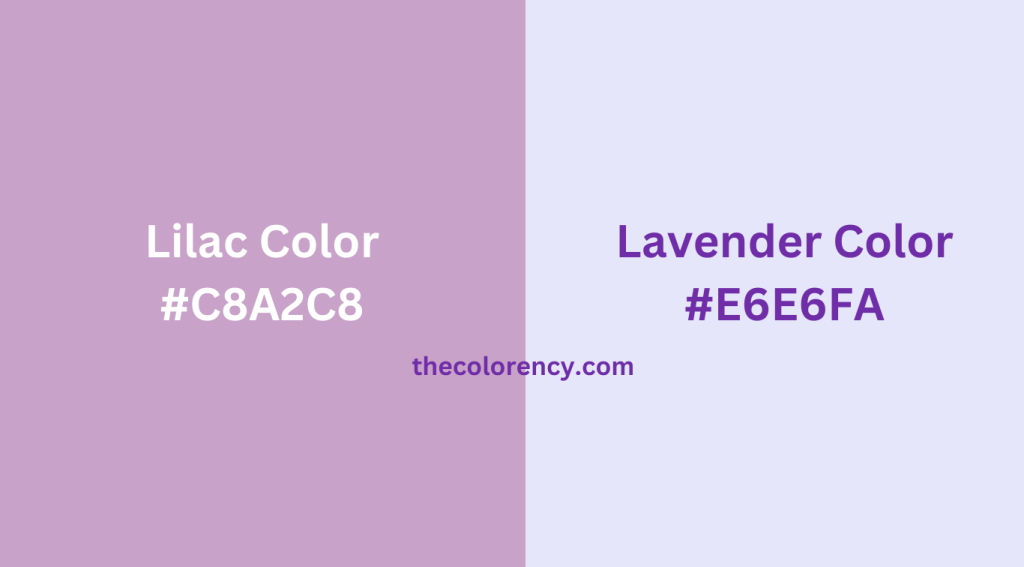
It is easy to get confused between the two colors of lilac and lavender.
While they are both shades of purple, there are differences that set them apart.
Knowing the differences between lilac and lavender can make a huge difference in the overall look of your project.
Whether you are selecting paint colors for your walls or selecting fabrics for your wardrobe, understanding the differences between the two colors can help ensure you get the look that you desire.
In this article, we will explore the subtle, yet significant differences between lilac and lavender.
Lilac Color
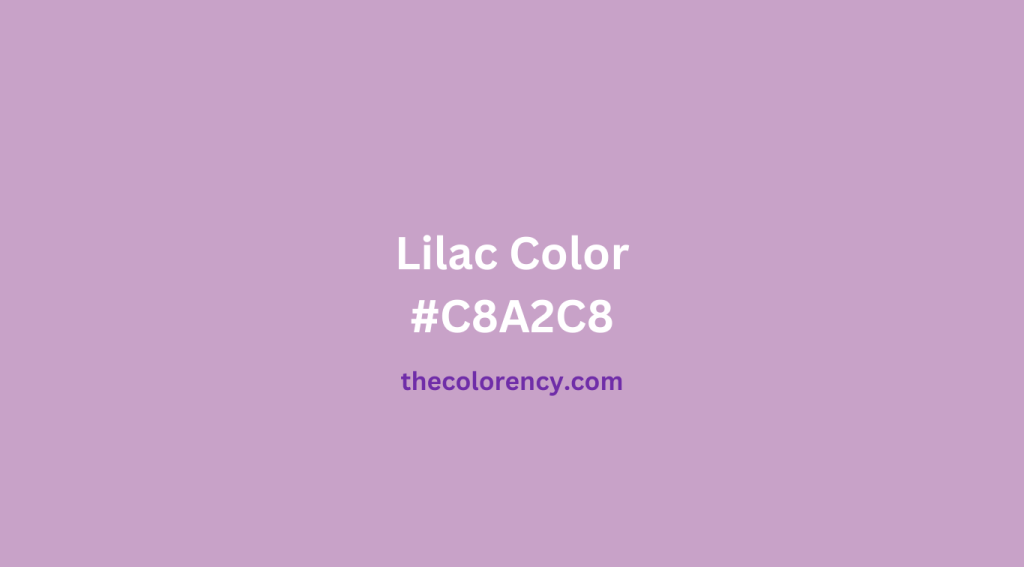
#C8A2C8
The lilac color is a delicate hue that has been captivating hearts for centuries. With a mix of blue and purple, it’s no wonder why this sweet color has become a favorite of so many. From clothing to home decor, the lilac color has become a popular choice for anyone who wants to bring a bit of romance and enchantment into their life. This guide will explore the history of this captivating color, its symbolism, and the best ways to incorporate it into your life.
The History of Lilac Color
Lilac is a color that has been around for centuries. The first recorded use of the word “lilac” dates all the way back to 1612 when a French writer used it to describe the pale purple color of a flower. Since then, the lilac color has been used to describe a range of shades from light purple to deep violet. The popularity of the lilac color has grown over the years, with it becoming a popular choice for clothing, home decor, and more.
The lilac color is closely associated with the French city of Lyon, which is known for its beautiful lilac-colored buildings. The city was the inspiration for many artists, writers, and creatives who sought to capture the beauty of the lilac color in their work. The lilac color has also been a source of inspiration for fashion designers, with many of them using it in their collections.
Symbolic Meaning of Lilac Color
The lilac color has a long-standing association with innocence, purity, and romance. The delicate hue is often used to depict the sweet and tender emotions of love and admiration. The lilac color can also be used to symbolize peace, tranquility, and harmony. It has become a popular choice for couples who want to reflect the delicate beauty of their relationship in their home decor.
The lilac color is also associated with certain religious beliefs. In Christianity, the color is said to represent trust and faith in God. In Hinduism, the lilac color is said to be a symbol of spiritual awakening and enlightenment. For Buddhists, the lilac color is believed to be an indication of inner peace and tranquility.
Lavender Color
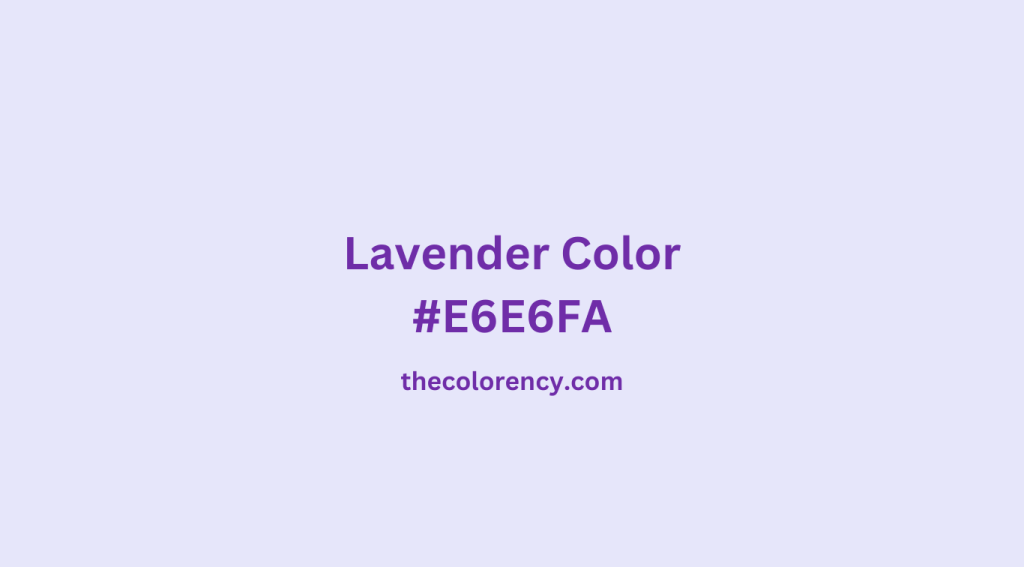
#E6E6FA
Lavender is one of the most tranquil and captivating colors in the spectrum. Its name is derived from the Latin word lavare, meaning “to wash,” and is commonly associated with the flowering plant of the same name. It is a versatile color that can be used to create different moods, depending on the shade. From its calming influence to its healing properties, this comprehensive guide will explore the many uses and benefits of the mesmerizing lavender color.
The History of Lavender
For centuries, people have cherished and utilized lavender for its wide-ranging benefits. Believed to have originated in the Mediterranean region, lavender has served as a valuable resource for its medicinal and therapeutic properties. Its delightful fragrance has found its way into perfumes, lotions, and aromatherapy treatments. Furthermore, it remains a favored choice in home decor, fashion, and art, adding a touch of elegance and charm to various aspects of life.
The Meaning of Lavender
Lavender is a light and airy hue that is both calming and soothing. It is often used to represent tranquility, grace, and elegance, as well as innocence and purity. It is a popular choice for weddings, as it symbolizes love, romance, and joy. Additionally, it is connected to femininity and is a symbol of spring and renewal. It is also believed to have healing powers, as it is thought to reduce stress and anxiety.
The Psychology of Lavender
With its natural calming properties, lavender finds frequent application in aromatherapy and meditation, aiding relaxation and stress reduction. Moreover, it stimulates creativity and imagination, rendering it ideal for bedrooms and creative spaces. Lavender is also believed to enhance focus and concentration, explaining its prevalent use in offices and schools.
The Different Shades of Lavender
Lavender can come in a variety of shades, from light and airy pastels to deep and bold hues. Light lavender is a delicate and feminine color, while a darker shade is often associated with power and sophistication. The different shades of lavender can be used to create different moods, depending on the desired effect. For example, a light lavender is perfect for a calming and peaceful atmosphere, while a darker shade is better suited for a more powerful and dramatic look.
The Popularity of Lavender
Lavender is a popular color choice for many reasons. Its calming properties and association with femininity make it a favorite among many decorators and designers. Additionally, it is often used as an accent color, as it stands out against more neutral colors. It is also a popular choice for weddings, as it symbolizes love, romance, and joy.
The Benefits of Lavender
Lavender not only boasts beauty and calming effects but also possesses believed healing properties. It is known to reduce stress, anxiety, and promote relaxation. Furthermore, it is believed to alleviate inflammation, enhance circulation, and aid in improving sleep quality.
Lilac Color vs Lavender Color
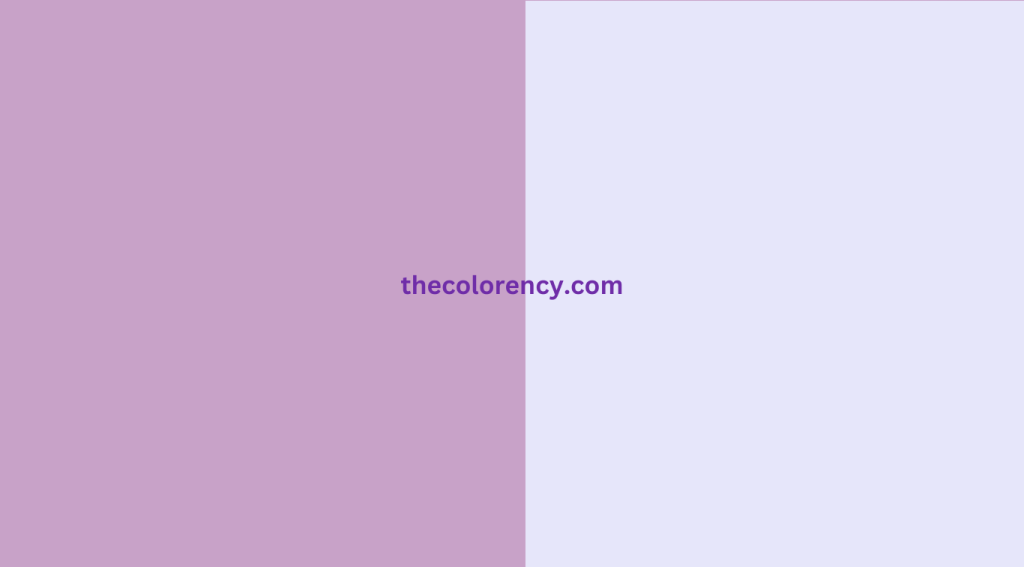
The Color Wheel
When it comes to understanding the differences between lilac and lavender, it is important to understand the basics of the color wheel. The color wheel is a visual representation of the colors of the spectrum. It consists of three primary colors (red, yellow, and blue), three secondary colors (orange, green, and purple), and six tertiary colors (red-orange, yellow-orange, yellow-green, blue-green, blue-violet, and red-violet). The colors of the spectrum are formed by mixing the primary colors.
When looking at the color wheel, lavender is located between blue-violet and red-violet, while lilac is located between blue-violet and purple. This is important to understand, as it helps to explain the differences between the two colors.
Difference in Tones
The distinction in their tonal qualities: Lilac is characterized by a more muted tone, while lavender possesses a brighter and more vibrant tone. This variation can be attributed to the inclusion of blue undertones in lilac, which contribute to its subtle and softer appearance. On the other hand, lavender incorporates pink undertones, giving it a livelier and more energetic tonal quality.
Difference in Hue
When comparing the hues of lilac and lavender, it’s important to note their contrasting characteristics. Lilac exhibits a more subdued hue, while lavender showcases a more vibrant hue. The presence of blue undertones in lilac contributes to its muted hue, creating a delicate and gentle color. In contrast, lavender derives its vibrant hue from the pink undertones, resulting in a lively and energetic color that catches the eye.
Difference in Use
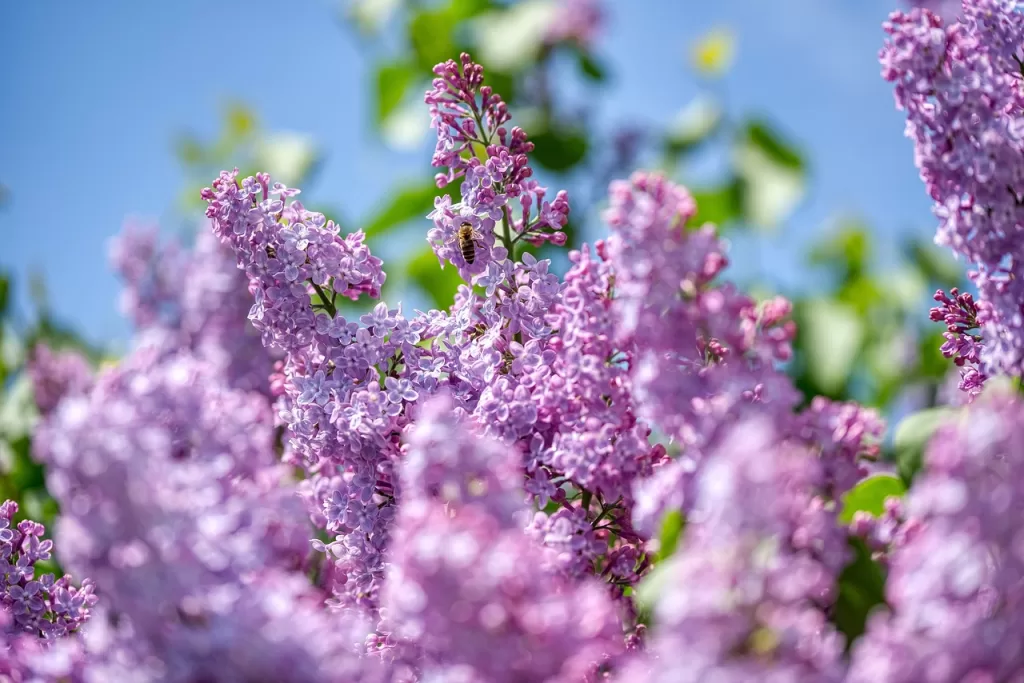
Lilac
Vibrant and energetic: Lilac is often seen as a more lively and energetic color due to its higher saturation and stronger hue.
Springtime and youthfulness: Lilac is commonly associated with the freshness and renewal of spring. It can evoke a sense of youthfulness and playfulness.
Celebratory and feminine: Lilac is frequently used in celebrations and events like weddings and baby showers. It is often considered a feminine color and is associated with romance and beauty.
Lavender
Soft and calming: Lavender has a more muted and calming effect compared to lilac. It is often used to create a tranquil and soothing atmosphere.
Relaxation and mindfulness: Lavender is commonly associated with relaxation and aromatherapy. It is often used in spas, bedrooms, and other spaces intended for rest and rejuvenation.
Subtle and elegant: Lavender’s softer tone and pastel quality give it a sense of understated elegance. It is often used in designs and decor where a gentle and sophisticated touch is desired.
Difference in Harmony

Lilac’s Vibrant Harmony
Lilac, with its lively and vibrant demeanor, adds a delightful touch to any space. This color, born from a fusion of blue and purple, brings a sense of energy and freshness. When paired with cool hues like blues and purples, lilac creates a harmonious blend that exudes a dynamic and invigorating ambiance. Additionally, combining lilac with soft pastels or pure white can evoke a dreamy and ethereal atmosphere, perfect for creating a romantic and enchanting setting.
Lavender’s Soothing Harmony
Lavender, on the other hand, carries a more soothing and calming presence. With its gentle and warmer undertones, lavender brings about a sense of tranquility and relaxation. This color harmonizes beautifully with other warm hues such as pinks, creams, and earthy tones.
The combination of lavender and gray or silver can create an elegant and refined ambiance, adding a touch of sophistication to any space. The calming nature of lavender makes it a popular choice for creating serene and peaceful environments, such as bedrooms and spa-like settings.
Versatile Neutrals
Both lilac and lavender find harmony in neutral colors. Pairing them with shades of white, beige, or gray provides a versatile backdrop that allows their subtle beauty to shine. These neutral hues complement the delicate qualities of lilac and lavender, allowing them to take center stage while adding a sense of sophistication and balance to the overall aesthetic.
Creating Contrast
While harmonious combinations are often sought after, incorporating contrasting colors can also yield captivating results. Complementary colors like yellows and greens provide a striking contrast to both lilac and lavender, creating visual interest and enhancing their inherent beauty. These vibrant pairings can be utilized to add a pop of energy and excitement to any design scheme.
Conclusion
Understanding the differences between lilac and lavender is crucial for making informed color choices.
From their tones and hues to their tolerance and popularity, each aspect plays a role in achieving the desired look.
Whether you’re painting your walls or selecting fabrics, having this knowledge empowers you to make confident decisions that align with your preferences.
Embrace the subtle variations between lilac and lavender to create the perfect aesthetic for your surroundings.
